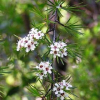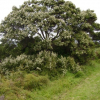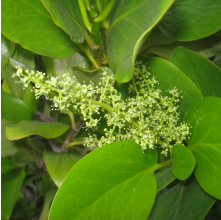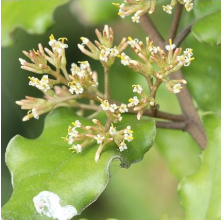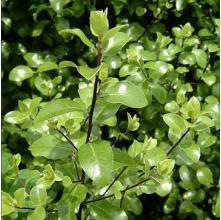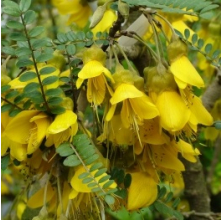Kunzea ericoides
(Kanuka)
Kunzea ericoides
(Kanuka)
Prices:
| Each | 20 or more | |
|---|---|---|
| 2.5L Pot | $9.50 | $9.00 |
Details:
| Type: | Tree |
| Growth Rate: | Fast |
| Mature Height: | 10 m |
| Mature Width: | 3 m |
| Site Condition: | Exposed, Frost Tolerant, Heavy Soil, Loamy Soil, Sandy Soil |
| Sun: | Full Sun, Part Shade |
| Drainage: | Dry, Moist |
| Frosts: | Hardy |
| Features: | Drought tolerant. Suitable for hedging or shelter. Attractive to birds, insects, lizards and bees. Colorful perennial. Rongoa. Flower colour: White. Foliage colour: Green. Fruit colour: Brown. Native. Suitable restoration species. |
Kunzea ericoides, Kanuka tree, is a fast growing tree found throughout the north of the South Island. The leaves are softer to touch than Manuka and has smaller white flowers in Summer. It is very hardy, tolerating drought, frosts and poor soils. It is a primary colonising plant and used for revegetation as a nurse plant. Both manuka and kanuka are used as a nurse crop with other early colonizing plants for revegetation / restoration planting and are also very effective in erosion control. It is fast-growing, but short-lived, living up to 150 years. A juvenile takes about seven years to reach reproductive maturity. Very hardy.
History of use: The name "tea-tree" comes from the early bushman who used Manuka and Kanuka leaves to brew a drink similar to tea. Captain Cook was the first person to brew tea from manuka and said that it had a very agreeable, bitter taste when made with fresh leaves, but lost some of it piquancy when made with dry leaves. Kanuka leaves produce a tea that isn't quite as flavourful. Both tea-trees supposedly have medicinal uses and properties whose benefits far outweigh any considerations of taste. The leaves, brewed in water, help urinary complaints and reduced fevers.
The Maori and early settlers used to chew young shoots or swallow a drink made from seed capsules as a cure for dysentery and diarrhoea. The liquid from boiling the bark was used to treat constipation, as a sedative to promote sleep and reduce fever, for bathing sore eyes, treating colic, inflamed breasts, scalds and burns. The white gum was applied to scalds and burns and was taken by adults and children to relieve coughing. There are much more medicinal uses to which tea-tree was put to. Kanuka flowers produce a reasonable amount of nectar that is quite favoured by honeybees. The thick golden honey is hard to remove from honeycombs, but is quite popular for its strong taste and reputed antibacterial properties. Nowadays New Zealand’s monofloral Manuka and Kanuka pharmaceutical honey are both renowned for their natural health benefits.
The tough wood was used by Maori for implements such as fern root beater, mauls, paddles, weapons, spade blades, weeders, digging sticks and bird spears. The timber was noted for its straight grain, durability and strength by early European settlers, and was in demand for wheel-spokes, tool handles and other such purposes. Kanuka and Manuka wood is commonly used as firewood, especially for barbeques, or charred into charcoal. Older trees of have their trunks covered with a light brown bark that readily strips off, and is frequently used for fire-kindling. Both Manuka and Kanuka branches have been used to make brush brooms.
Habitat: Coastal to lowland shrubland, regenerating forest and forest margins, also present in montane forest, ultramafic shrubland and very occasionally present in subalpine shrubland.
Flowering: Spring - Summer [September - February]
Fruiting: Autumn [March - April]
My Lists: Erosion Control, Pioneer Species
(Taxonomists recently confirmed that K ericoides, K robusta, and K serotina are all the same species and declared all South Island Kānuka Kunzea ericoides.)
Plant Calendar:
| Jan | Feb | Mar | Apr | May | Jun | Jul | Aug | Sep | Oct | Nov | Dec |
|---|---|---|---|---|---|---|---|---|---|---|---|
| N | N | N | N | N | N |
| Flowering | Fruiting | Both | |
| Key |
| Fruit | Seed | Nectar | |
| Key | F | S | N |

